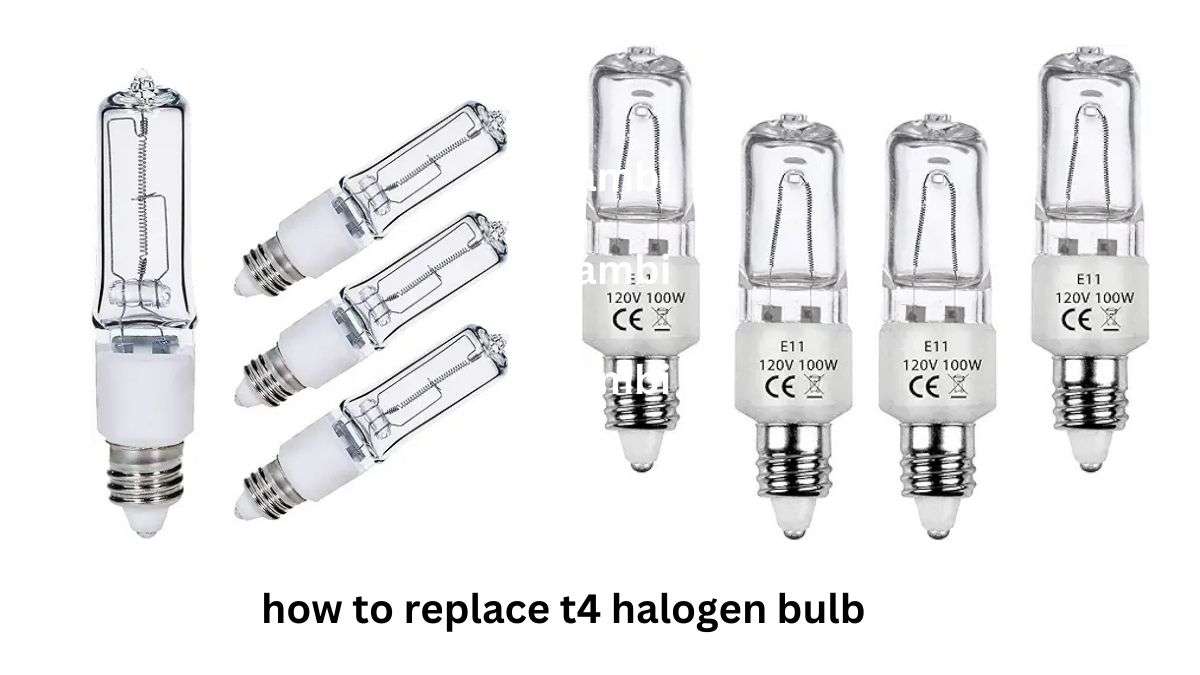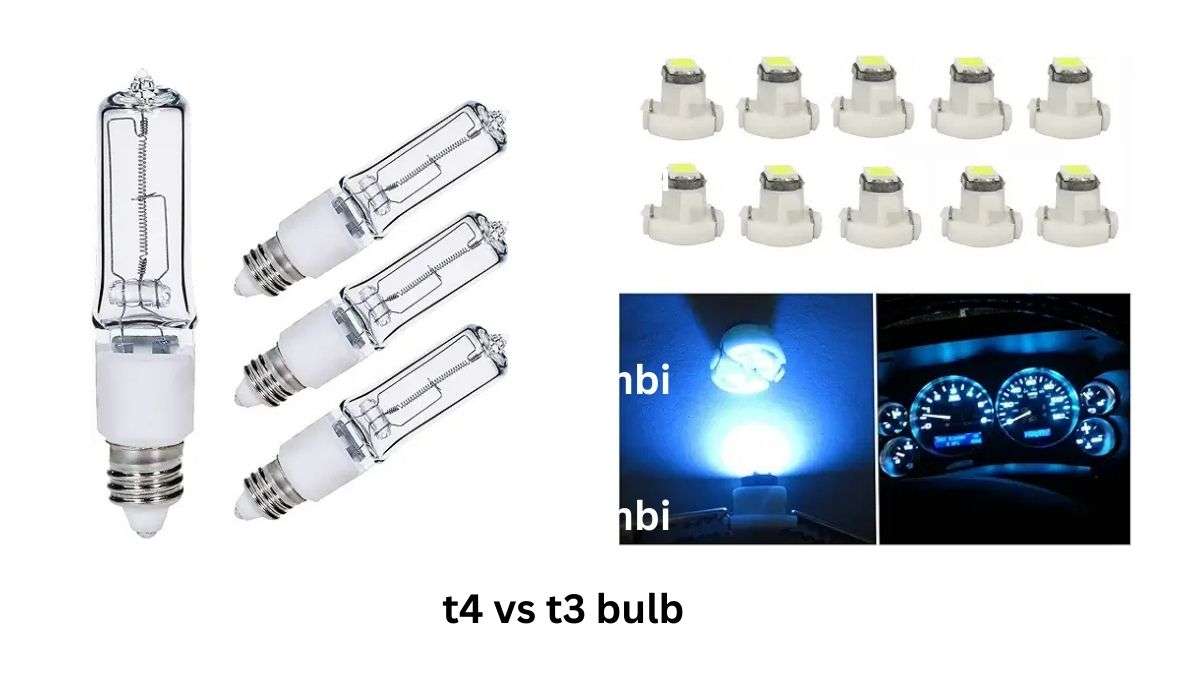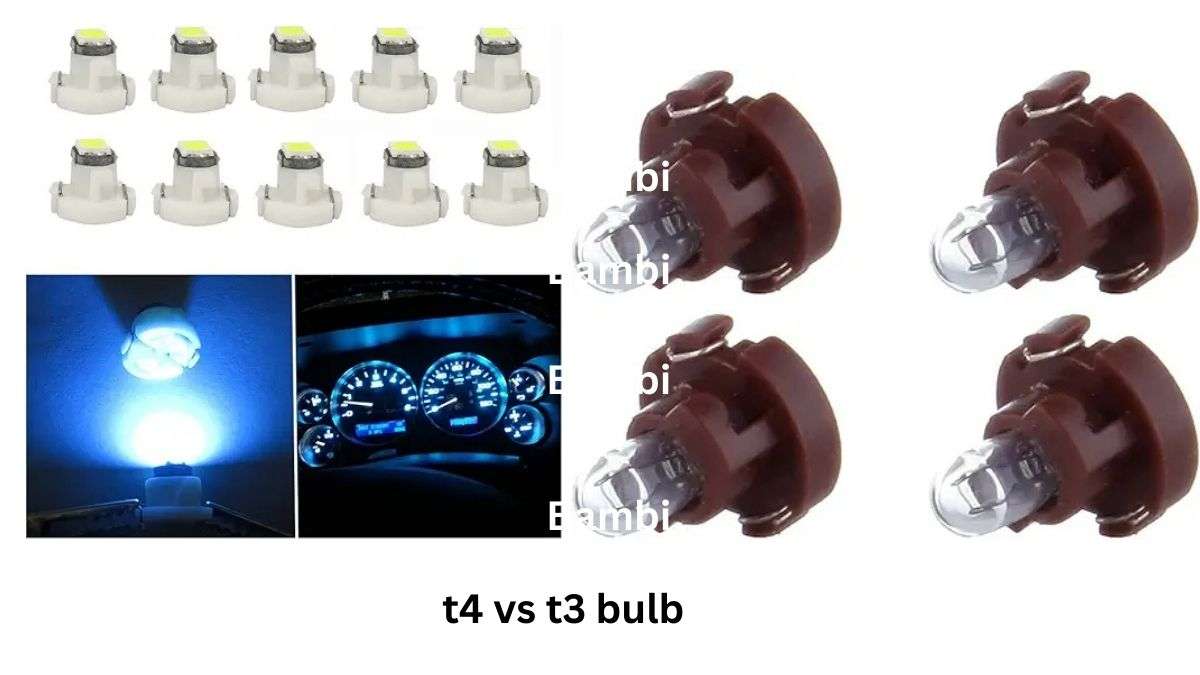Did you know that choosing the wrong bulb type can increase your energy costs by up to 30%? I’ve been helping homeowners and professionals select the right lighting solutions for over a decade, and the T4 vs T3 bulb debate is one I encounter frequently! In this guide, we’ll dive deep into these popular bulb types, exploring their unique characteristics and helping you make the perfect choice for your specific needs.
Physical Characteristics and Design
The difference between T4 and T3 bulbs starts with their physical dimensions. The “T” in T4 and T3 stands for “tubular,” and the numbers indicate the diameter of the bulb in eighths of an inch.
1. Diameter Comparison:
A T4 bulb has a diameter of 4/8″ (or 1/2 inch), while a T3 bulb is slightly smaller at 3/8″.
Understanding the “T” Designation:
The “T” classification is commonly used in lighting, especially for fluorescent tubes and compact halogen bulbs. Knowing the diameter helps determine if the bulb will fit your fixture.
2. Length Options:
T3 bulbs are generally shorter and work well in compact spaces, while T4 bulbs offer more variety in length, making them a fit for under-cabinet lighting and other linear applications.
3. Base Types and Compatibility:
T4 bulbs often use bases like G8 or G9, while T3 bulbs commonly come with a G4 base. These bases differ in pin spacing, so checking your fixture’s compatibility is essential.
4. Glass Composition and Construction:
Both T4 and T3 bulbs are typically made of durable glass, with T4 bulbs sometimes offering an extra layer of coating for better heat resistance.
Performance Specifications
When it comes to performance, both T4 and T3 bulbs offer various options, but each has its unique strengths.
1. Wattage Range:
T4 bulbs usually operate between 20 to 50 watts, while T3 bulbs are slightly less powerful, often between 10 to 35 watts.
2. Lumen Output:
T4 bulbs generally provide a higher lumen output, making them better suited for tasks requiring more brightness, like workspaces.
3. Color Temperature Options:
Both bulb types come in various color temperatures, from warm (2700K) to cool (5000K) lighting, allowing you to set the ambiance that matches your preference.
4. Lifespan:
On average, T4 bulbs tend to last longer due to their design, offering between 8,000 to 10,000 hours. T3 bulbs typically last between 5,000 to 8,000 hours, depending on usage.
5. Energy Efficiency:
T4 bulbs often score higher on energy efficiency, reducing your energy bills while delivering reliable lighting.
Common Applications and Best Uses
Knowing where to use each bulb type can help you get the most out of your lighting setup.
1. Ideal Settings for T4 Bulbs
- Under-Cabinet Lighting: T4 bulbs provide a slim profile and good brightness, ideal for kitchen or workbench lighting.
- Display Cases: They’re perfect for display lighting as they showcase items with clear, bright illumination.
- Task Lighting: When you need focused lighting for tasks like reading or working, T4 bulbs are a reliable choice.
2. Perfect Applications for T3 Bulbs
- Desk Lamps: T3 bulbs offer adequate brightness for close-up tasks, such as reading or writing.
- Picture Lights: Their compact size and soft illumination make them ideal for accentuating artwork without harsh shadows.
- Specialty Fixtures: From accent lighting to specific design features, T3 bulbs work well in fixtures needing smaller, more flexible bulbs.
3. Industry-Specific Recommendations
For industries like hospitality, T4 bulbs might be preferred for bright, energy-efficient lighting, while T3 bulbs can serve well in decor lighting for restaurants and cafes.
Installation and Compatibility
Proper installation ensures optimal performance and safety.
- Socket Requirements:
Ensure your fixture supports the T3 or T4 socket type to avoid fitting issues. - Fixture Compatibility:
Confirm the wattage and voltage specifications match your fixture to prevent overheating or damage. - Installation Tips:
Always handle bulbs with clean hands or gloves to prevent oil transfer, which can reduce bulb lifespan. - Common Mistakes to Avoid:
Using a higher-wattage bulb in a lower-wattage fixture can result in overheating and potential fire hazards. - Safety Considerations:
Avoid touching the bulb directly when it’s hot, as these bulbs can reach high temperatures quickly.
Cost Analysis and Value
Understanding the cost implications of each bulb type will help you choose the most budget-friendly and effective option.
- Initial Purchase Price:
T4 bulbs are typically more expensive upfront, while T3 bulbs offer a more budget-friendly entry price. - Long-Term Operating Costs:
T4 bulbs save more in the long run due to their energy efficiency and longer lifespan. - Replacement Frequency:
T4 bulbs require less frequent replacements, which can save time and maintenance costs. - Return on Investment (ROI):
Though initially more costly, T4 bulbs often offer a better ROI in energy savings and longevity.
Environmental Impact
With more focus on eco-friendly options, it’s good to consider the environmental impact of each bulb type.
- Energy Consumption:
T4 bulbs consume less power and produce more lumens, which means they’re less taxing on the environment. - Materials and Recycling:
Both bulb types are recyclable, though T4 bulbs sometimes use slightly more eco-friendly materials. - Carbon Footprint:
T4’s lower power consumption contributes to a reduced carbon footprint over time. - Disposal Guidelines:
Both T3 and T4 bulbs contain materials that should be disposed of carefully. Verify local laws for appropriate disposal techniques.
Maintenance and Care
Proper care can extend the life of your bulbs and enhance their performance.
- Cleaning Recommendations:
Use a soft, dry cloth to clean bulbs; avoid using water to prevent electrical issues. - Handling Guidelines:
Always allow the bulb to cool before handling to avoid burns. - Replacement Indicators:
Flickering or dimming light indicates it’s time to replace the bulb. - Troubleshooting Common Issues:
If a bulb doesn’t light up, check for proper installation and inspect the socket for damage. - Tips for Extending Bulb Life:
Turn off lights when not needed, and use fixtures with dimmers to extend lifespan.
Conclusion: T4 vs T3 bulb
In the end, both T4 vs T3 bulbs have their unique advantages. T4 bulbs tend to offer higher energy efficiency, a brighter light output, and a longer lifespan, making them ideal for tasks and display lighting. T3 bulbs, on the other hand, provide a cost-effective and compact solution for accent and specialty lighting. So, consider your specific lighting needs, budget, and installation space when making your choice. After all, the right bulb choice now can lead to years of optimal lighting performance and energy savings!
Related articles:
Hi, I’m Malik Suhail—an SEO expert, web designer, and passionate blogger with 2 years of experience. I specialize in crafting content that is not only informative but also tailored to meet the needs of my readers.
I write about diverse topics, always striving to simplify complex ideas and provide valuable insights that resonate with my audience. Whether it’s about SEO strategies, web design trends, or blogging tips, I am committed to delivering well-researched, practical, and easy-to-understand information.
My mission is to help readers navigate the digital world with confidence and clarity. I believe in adding value through authentic content that inspires action and delivers results.


